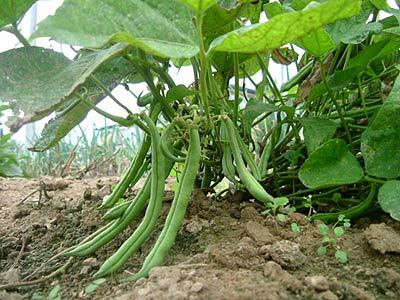The future of bean farming looks good in SA – Bean farming in South Africa is a vital part of the agriculture industry. The crops grown in South Africa are maize, beans, tobacco, and vegetables. the demand for these crops is high in markets all over the world – Reasons why you should consider Bean Farming
South Africa has one of the world’s most diversified agricultural landscapes. There are over 120 types of crops that are grown in the country. beans are the third most important crop grown in the country after maize and tobacco.
The Nature of Bean Farming in South Africa
The bean crop is one of the most versatile in the world. Multiple varieties can be grown together to produce a bumper crop, or a particular type can be selected to produce a particular desirable quality. In South Africa there are three main bean varieties grown – bush beans, lima beans, and white beans.
When choosing a bean variety, it is important to consider the climate where you plan to grow it. Bush beans are well-adapted to warm climates and are popular in the Cape Province. Lima beans prefer a cooler climate, while white beans do well in both warm and cool climates.
The Cost of Bean Farming in South Africa
Bean farming is one of the most affordable crops to farm in South Africa. The average initial investment for a bean farm is around R4 million. This investment can be spread over three to five years and will yield a bumper crop of beans each year.
The Future of Bean Farming in South Africa
The future of bean farming looks good in South Africa. The country is fast developing and the demand for interesting, affordable food is on the rise. This is good news for the bean farmer, as there is a huge market for their crops.
The events of the past year have had a profound effect on the farming community in South Africa. The great drought of 2009 hit the farming community hard, as did the fires in March this year that destroyed a large number of farms. This combination has resulted in a decrease in production and a rise in the cost of agricultural inputs.

Since 1994, the South African Agricultural Structural Adjustment Program has been used to reform the country’s agricultural sector. The program has aimed to promote export-led growth and to improve rural incomes. The government has also been trying to lessen the impact of droughts on the agricultural sector.
In the past, the government has had to buy maize and other food items from the international market in order to ensure that the population had enough to eat. This situation changed in 2007 when South Africa became a member of the Common Market for Eastern and Southern Africa (Comesa). Comesa is an organization that coordinates policies between member states in order to promote economic development. As a result of this change, the government began to produce maize and other food items for domestic consumption. This change has led to a reduction in the country’s import bill and has improved the agricultural sector’s balance of payments.
In spite of the drought and the fires, the overall picture for the agricultural community is one of optimism. There are a number of factors that are contributing to this optimism. First of all, the country’s agricultural sector is facing some of the most intense competition in recent memory. This competition is resulting in the closure of factories and the lay-offs of a large number of workers. However, the agricultural community is also experiencing a revival in demand for their products. This revival is being driven by the growth of the global economy and the increase in food demand in developing countries.
In spite of these positive developments, the agricultural sector faces a number of challenges. One of the most significant challenges is the decline in production due to the weather conditions. This decline is a result of the loss of productive land, reduced yields, and a decline in market demand. Additionally, the agricultural sector is facingforeign competition, which is resulting in the closure of a number of local businesses. In order to overcome these challenges, the agricultural sector will need to undertake a number of changes.

One of the changes that the agricultural sector will need to make is to adopt new technologies. This is because current technologies are not capable of dealing with the diverse conditions that are found on many farms. Additionally, the agricultural sector will need to diversify its products in order to ensure that it retains market share. Diversification is necessary in order to reduce the impact of foreign competition. In addition, the agricultural sector will need to improve its marketing efforts in order to ensure that it is able to reach a wider market.
Despite the challenges, the agricultural sector is still doing well. The downturn in production is likely to last for a few years, but the sector is likely to experience a revival in the future. This revival is likely to bedriven by the growth in the global economy and the increase in food demand in developing countries.
YouTube Channel: Farming South Africa
Facebook Page: Farming Life
Back To Home Page: Farming South Africa
Reasons why you should consider Bean Farming

